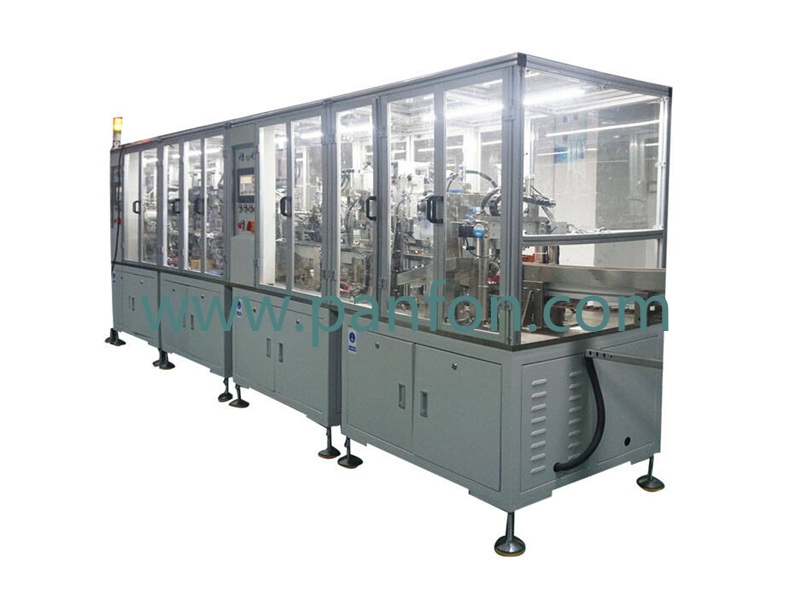Description
Overview of automated air tightness testing machine
The testing principle of the automated air tightness testing machine for tire valve cores is mainly based on the pressure change monitoring method. It judges whether the sealing performance of the valve core meets the standards by precisely controlling gas pressure and monitoring its changes.
Specific process
- Workpiece positioning and sealing: The air tightness testing machine fixes the tire valve core at the testing station through an automatic fixture, ensuring that the interface of the valve core is completely fitted with the sealing component of the testing device, forming a closed test cavity (usually including the internal channel of the valve core and the external sealing surface).
- Inflation and pressurization: The system fills the closed cavity or the interior of the valve core with gas (such as compressed air or inert gas) at a specific pressure. The pressure value is set according to the standard specifications of the valve core (for example, the common 2-5 bar), and a short pressure holding time is maintained to make the gas fully stable in the cavity.
- Pressure monitoring and leakage judgment: After the pressure holding is completed, the air tightness testing machine monitors the pressure change in the closed space in real time through a high-precision pressure sensor. If the valve core has sealing defects (such as worn valve core, failed sealing ring, etc.), the gas will leak, resulting in a pressure drop. The system will compare the pressure drop value with the preset qualified threshold (such as the maximum allowable pressure drop of 0.01 bar/minute):1. If the pressure drop is ≤ the threshold, it is judged as air tightness qualified;
2. If the pressure drop is > the threshold, it is judged as leakage unqualified. - Automatic processing and feedback: The test results are transmitted to the control system through sensors. Qualified workpieces are sent to the next process by a robotic arm or conveyor belt, while unqualified products are automatically sorted and rejected. The test data (such as pressure change curve, classification of unqualified reasons) are recorded to facilitate production traceability and quality analysis.
The core advantage of this principle lies in high precision and high consistency, which avoids the subjective errors of manual testing. At the same time, the automatic process realizes high-speed batch testing, adapting to the efficiency requirements of industrial production of tire valve cores.
 +8613906047998
+8613906047998